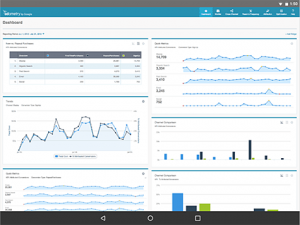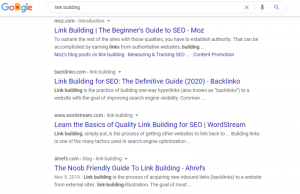How you work today could be creating downstream issues. We outline what you need to know to manage a hybrid workplace.
Should you go to the office today or not? At home there are distractions to contend with, technology issues and the potential productivity drain of work around the house.
If you conquer the distractions and the technology, then maybe you’ll be much more productive at home. But the uncertainty of whether you will see your colleagues is now part of the social fabric of workplace environments. The everyday questions of ‘Where should I work today?’ or ‘Will my team keep me informed?’ are exacerbated by the bigger issue of what will happen next with the pandemic.
Today, in the daily experience of leaders and their teams there is a much higher degree of ambiguity and uncertainty. The remote office, and with it, the hybrid office, have created new opportunities and challenges.
Microsoft CEO, Satya Nadella, summarised the change experienced in 2020 by saying “We’ve seen two years’ worth of digital transformation in two months”. Recent research showed that 74% of CFOs plan to move a large portion of the organisation to remote working.
Teams are using multiple communication channels, sometimes for the first time. There have been dramatic increases in the use of live chat, email and video – approximately half of the employees in nearly 2600 medium-to-large companies in Australia, France, Germany, Italy, Japan, Singapore, Spain, the UK and the USA said their company had dramatically increased its use of these tools.
Despite this, people are having greater difficulty connecting, with teams split between home and the office. The geographic divide created by hybrid working generates concerns and anxiety, as people struggle to get the information and face time they need to progress their work in a meaningful way.
Now that video has become a central tool in team communication, there are fresh issues there as well. Hybrid situations can create two classes of attendees – those with full access to people, opportunities and information at the meeting, and those without.
Silos are being exacerbated. It is common for people to limit their interactions to their core group of workmates rather than the wider group when in the office. There is a view that we are getting worse at being able to connect and read people, thanks to the pandemic.
All of this puts pressure on leaders and teams. It leads to questions about whether your workplace of today is fit for the business you want tomorrow.
And yet leaders can sometimes be the last to be convinced.
Interestingly, there is one group in the workforce that is doing well under hybrid conditions – and it’s the one most likely to be reading this article. 60% of business leaders are said to be ‘thriving’ while a similar percentage of Gen Z are only ‘surviving’ or struggling with wellbeing and mental health, according to Microsoft’s Work Trend Index.
It is easy enough to gloss over reports of workplace uncertainty and stress. Leaders sometimes ask me, as we discuss the state of their workforce: “Is there really an issue?” It’s a fair question. And one that needs to be addressed through a solid understanding of the nature of the work, the workplace and the teams using it. Leaders also need their wits about them to ensure they’re judging the situation correctly.
There is a massive tendency to overestimate the positivity of the workplace experience. As an example, there is a 23% gap between employer and employee perceptions of flexibility of hours (Workforce, 2021). Employers are much more bullish than their employees. As a result of this tendency, some employers will disregard the employee experience and end up misinformed, believing that the reported issues are ‘not that bad’.
Employers who want to create a workplace where people are inspired to contribute their best work should pay careful attention to the reality of what their employees are experiencing. There is reason to be concerned.
When teams are split between home and office, remote team members often feel at a disadvantage during meetings vis-à-vis those who are physically together. They experience loneliness due to misunderstandings and lack of nonverbal cues, informal conversations and opportunities to mingle, exacerbating concerns about rejection. This can create inequality, which is a fundamental key to human motivation at work. In other words, inequality is guaranteed to undermine your people’s willingness and interest to contribute anything above their bare minimum.
Young people feel they are missing out on the mentorship and soft skills they would have received working alongside older colleagues in the office who could help advance their careers. The number of connections new hires make at work is down 17% compared to pre-pandemic.
Hannah McConnaughey, Product Marketing Manager, described her experience of being a new hire at Microsoft: “Networking as someone early in their career has gotten so much more daunting since the move to fully remote work — especially since switching to a totally different team during the pandemic. Without hallway conversations, chance encounters, and small talk over coffee, it’s hard to feel connected even to my immediate team, much less build meaningful connections across the company.”
Unstructured, unplanned communication adds pressure on top of stress and currently 62% of calls and meetings are ad hoc.
Nonetheless, we believe it is possible to create a workplace today that will inspire people tomorrow. Indeed, it is up to leaders like you and influencers like us to find a way to make sure that will happen.
Here are a few maxims we hold true in the changing modern workplace. Knowing these can help you avoid a communication and productivity crisis born of poorly-managed hybrid work.
- Each team’s ideal location will depend on the nature of their work and individual preferences. This is because individual preferences for flexibility vary wildly. One person’s work from home day is associated with increased productivity, while their teammate’s work from home day means nothing but distraction.
- The ideal location for each team will change dynamically. Preferences will continue to evolve, as lifestyle and work demands shift and develop. For some, their ideal location may be the office, for others, their home office, and for others, a completely different third space. Next month, different conditions will change the situation. The person who never used to care about being able to bump into their colleagues at the cafe downstairs is now pining for it. The team member who swore working from home was not for them is now talking about keeping it going in one form or another.
- Technology does not hold all the answers. There is, absolutely, a need for improved technology to ensure remote workers feel on equal footing with those in the office and not relegated to being a box on a screen. Virtual reality may begin to offer something here, once it offers experiences of meeting together that feel real. Only a couple of weeks ago I spoke with a technologist who shared how convincingly life-like and realistic some experiences in virtual reality have been for her.
- Conversations in person are the highest quality conversations. Topics that are sensitive, complex and nuanced are best held in person. In person conversations have the highest authenticity and provide the richest source of much-needed information. A lot can be understood from the way something is said, not just what is said. If it is not possible to hold these conversations in person, the next best thing is to be fully remote. Hybrid is a compromise, and sometimes a necessary one but how much of it must you tolerate? And how well are you managing its risks? After studying and gaining rich professional experience in the science of communication, I can guarantee that poorly managed hybrid meetings are creating pain points.
- Space to mingle is just as important as space to collaborate. The office must now be compelling enough to tempt people to come into the space. A large number of employers are radically reducing the size of their office space. Now, when people come into the office, it will be to mix and mingle and to collaborate. The office will need to support both of these key communication functions especially well, according to the ratio that suits the nature of the work. This will impact the number and size of meeting rooms and collaborative areas and the functionality of each space. It may mean that your office begins to look more ‘social’ than before, with cafes and water cooler spaces playing a more significant role.
We can create workplaces that inspire people to contribute their best work. Leaders need to put their own experience aside to properly listen to the experience of their employees.
Business & Finance Articles on Business 2 Community(10)







